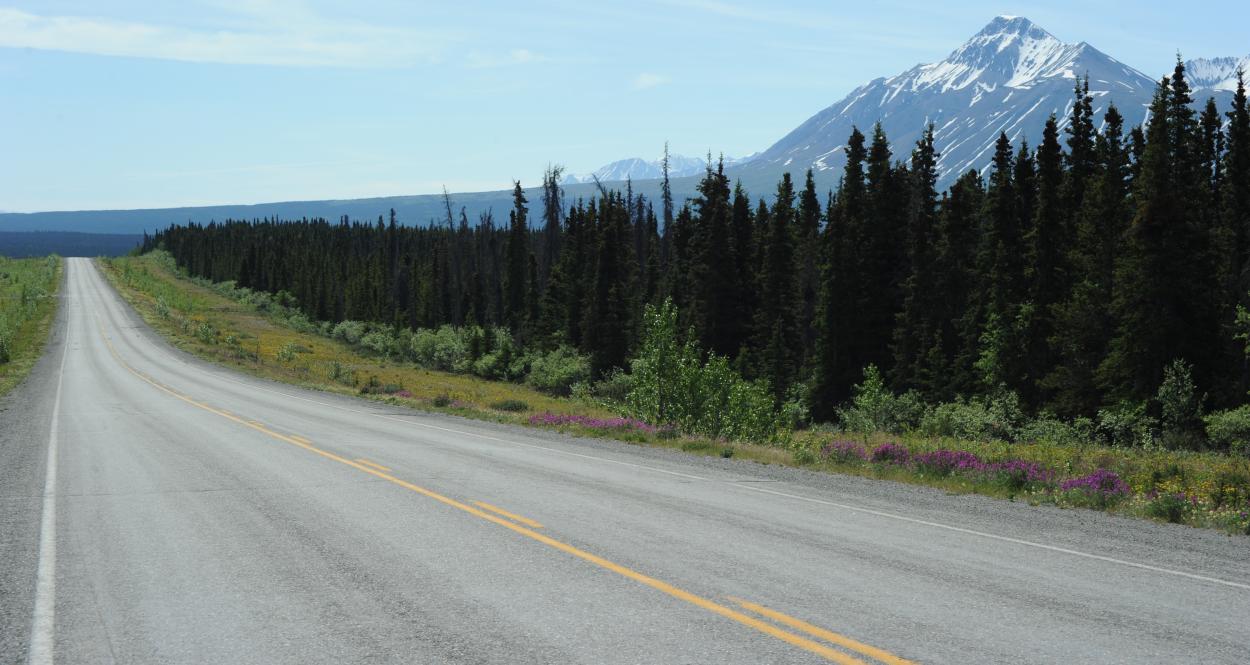
Restoring the Shakwak corridor
Shakwak is an informal name given to a road corridor in the Yukon. Its name comes from a Tlingit word meaning “between the mountains”.
The Shakwak corridor faces some road maintenance and safety challenges. Find out what these challenges are and what steps are being taken to address them.
What is the Shakwak corridor?
The Shakwak corridor is an informal name given to the road corridor made up of the:
- Alaska Highway, from the Alaska Border at Beaver Creek to Haines Junction; and
- Haines Road, from Haines Junction to Haines, Alaska.
The Shakwak corridor is important to both Canada and the United States.
For Canada, the Shakwak corridor connects many rural communities in the Yukon. The communities that rely on this highway are:
- Haines Junction;
- Destruction Bay;
- Burwash Landing; and
- Beaver Creek.
It also helps connect the traditional territories of the:
- Champagne and Aishihik First Nations;
- Kluane First Nation; and
- White River First Nation.
For the United States, the Shakwak corridor is the main land connection between southeast Alaska and the Lower 48.
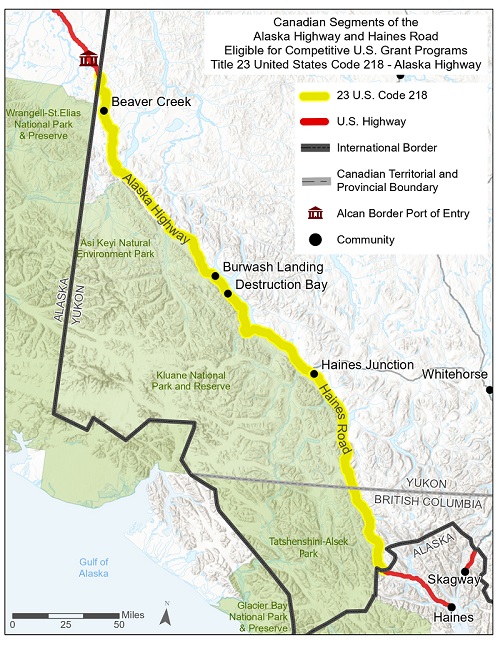
Status of the Shakwak corridor
The Alaska Highway part of the Shakwak corridor covers ground that contains ice-rich permafrost.
Permafrost is ground that remains frozen year-round. It's covered in an active layer of ground that freezes and thaws seasonally.
Rising temperatures in the Yukon have, in many places, caused the active layer to deepen and permafrost to thaw. This can affect the stability of the ground and the road above it.
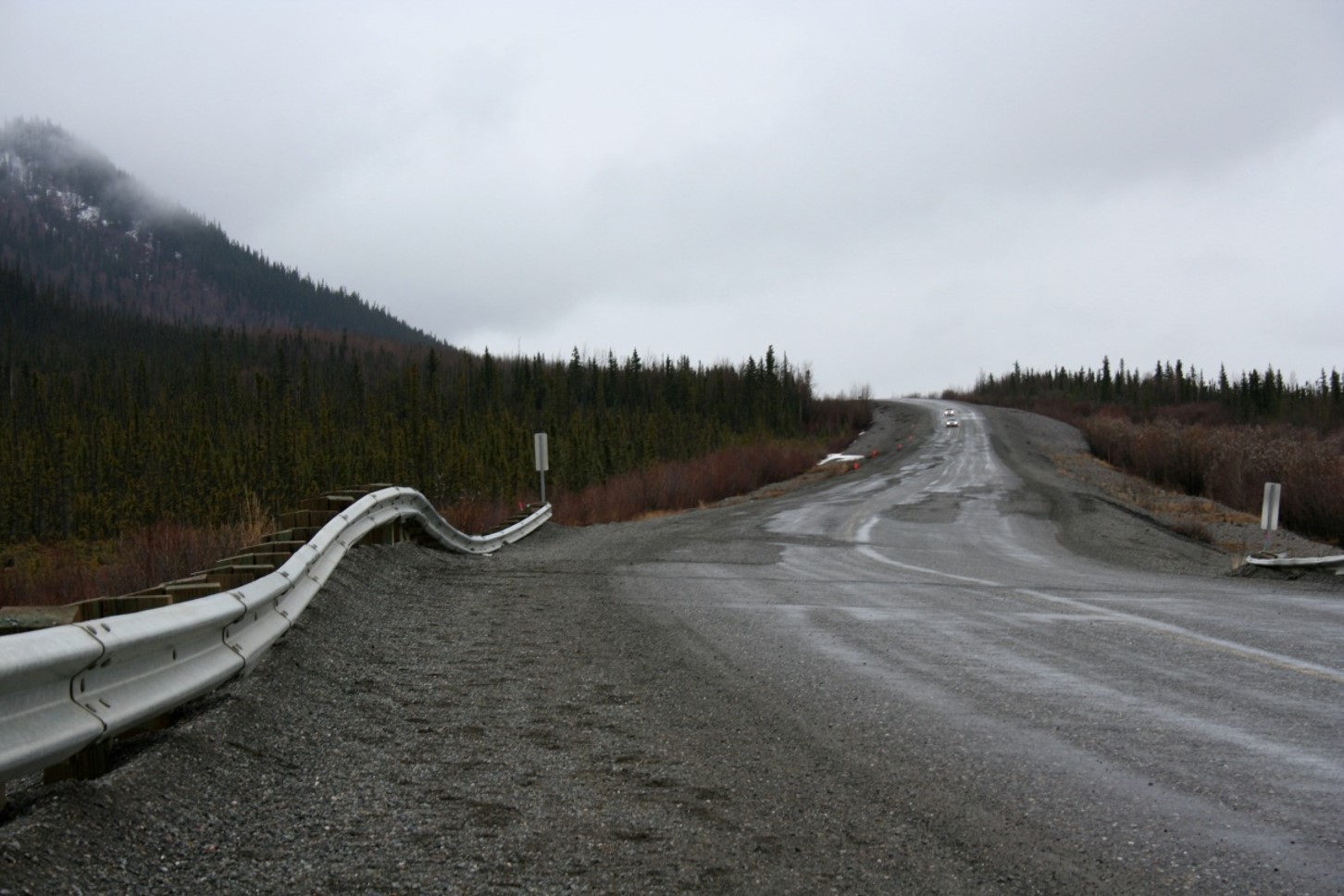
Because of permafrost thawing, the Alaska Highway segment of the Shakwak corridor currently has:
- a distorted road surface with cracks, bumps and potholes;
- cracked road shoulders; and
- sunken and warped guardrails along the road edge.
This makes certain affected sections of the road difficult to drive and maintain.
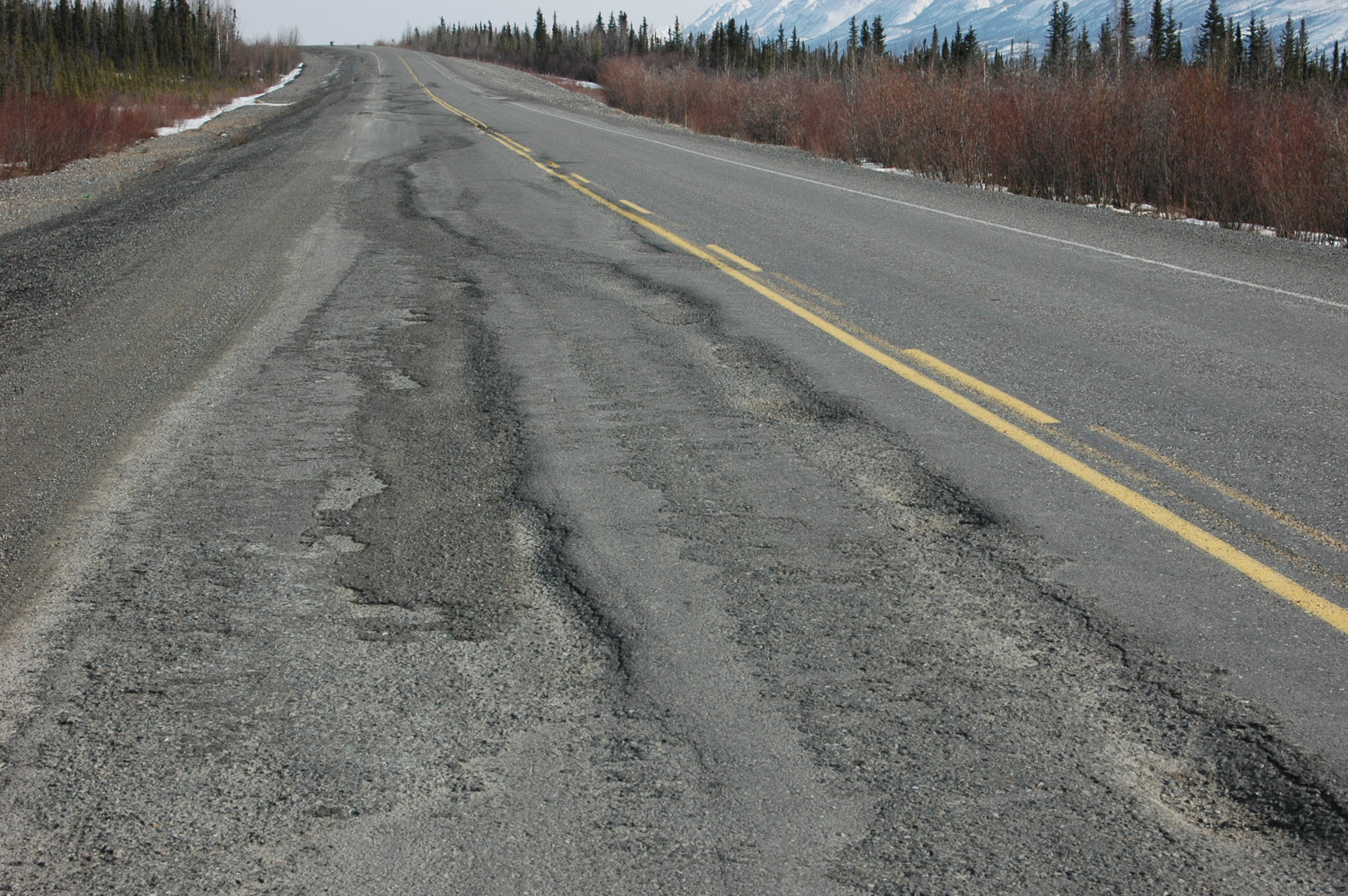
Our work on the Shakwak corridor
Both the Yukon and Alaska have taken steps to maintain and restore Shakwak from the negative effects of permafrost thaw.
Road maintenance
The Government of Yukon maintains the entire Shakwak corridor but pays close attention to the deteriorating road surface in the Alaska Highway section . This is the portion of the corridor most affected by permafrost.
We inspect the road in spring and fall every year. The inspections help us figure out where maintenance work is most needed to improve road condition and safety.
During summer maintenance work, some sections of road have been converted from bituminous surface treatment (BST) or “chip seal” to gravel. Road conditions in these sections fluctuate due to the thawing permafrost underneath. Converting to a gravel surface helps to reduce overall maintenance costs.
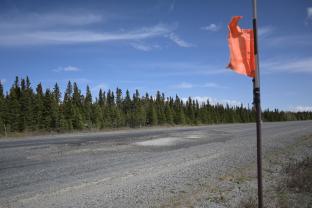
Thermosyphons
Thermosyphons are a series of tubes that allow heat to escape the ground to keep soil cool. This helps prevent the permafrost from thawing. This keeps the ground solid and the road stable.
The Government of Yukon installed thermosyphons along 400 metres of the Alaska Highway. They're located near Beaver Creek. We did this as part of a pilot project in partnership with researchers at Yukon University.
Funding opportunities
Road maintenance costs up to 6 times more in areas affected by thawing permafrost. This is in comparison to areas where permafrost is either stable or absent.
In the past, the United States provided funding to improve road conditions in the Shakwak corridor. This was done under the 1977 United States-Canada Shakwak Agreement.
The United States last allocated funds to the agreement in 2009. The funds were depleted in 2015. Now, the only funding to improve the Shakwak corridor comes from the Yukon’s annual maintenance activities on the road.
Recently, the Government of Yukon and State of Alaska have been working together to secure funds to improve Shakwak road conditions. We’re doing this through United States federal grant opportunities.
We’re working with the State of Alaska to apply to the United States Department of Transportation’s Rebuilding American Infrastructure with Sustainability and Equity (RAISE) discretionary grant program in 2024.
Funding from the State of Alaska
The Yukon government will receive USD $31.125 million (over CAD $42 million) over 3 years for this project starting in 2025. This is thanks to Alaska’s Statewide Transportation Improvement Program (STIP).
Read the news release for more details
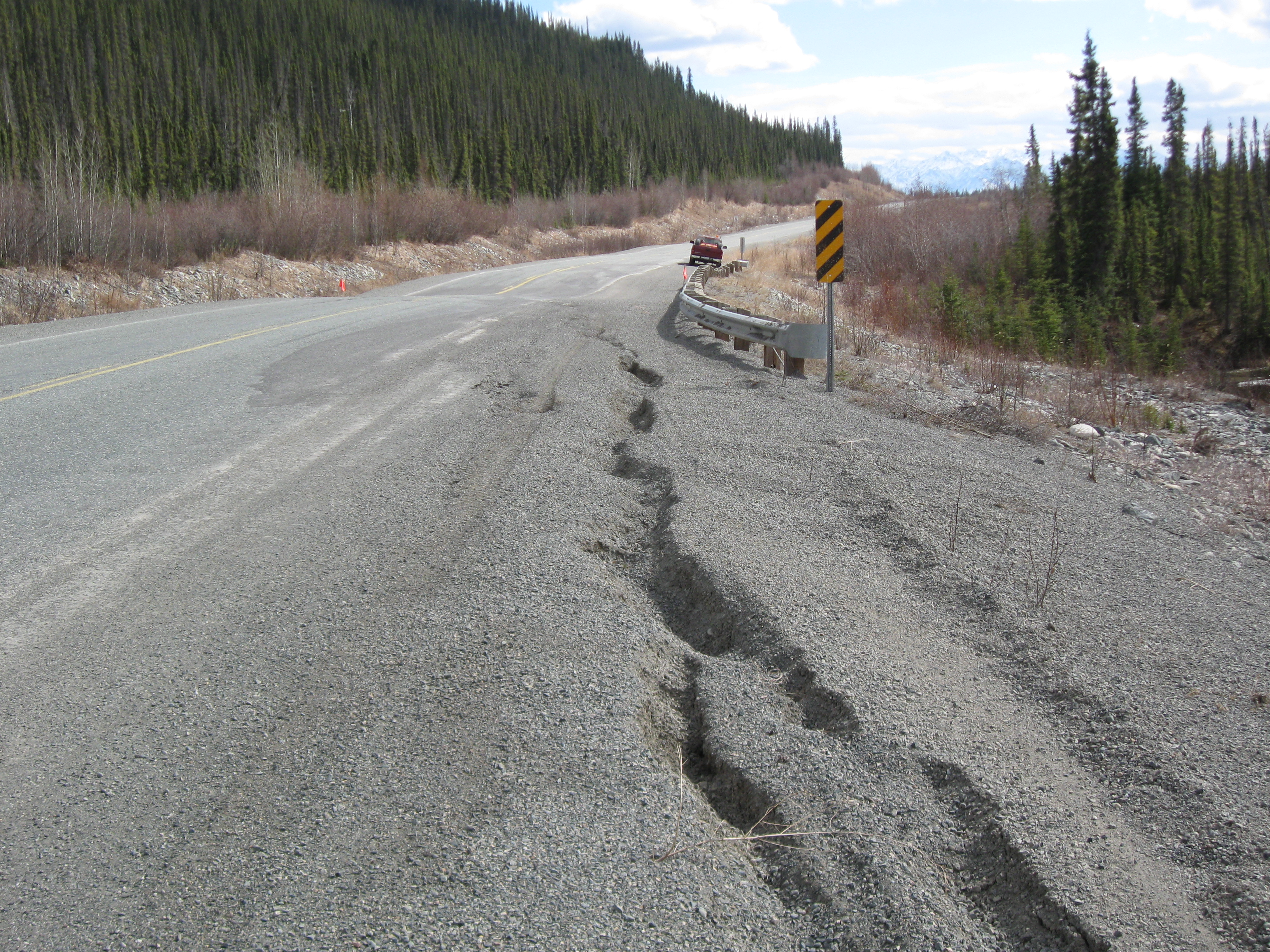
Drive safely on the road
If you’re here visiting, new to the Yukon or you’ve just not traveled this stretch of highway before, it may be unlike other roads you’ve driven. You’ll need to adjust your driving habits and exercise caution to safely navigate the roadway.
Here are a few tips to follow when driving through the Shakwak corridor.
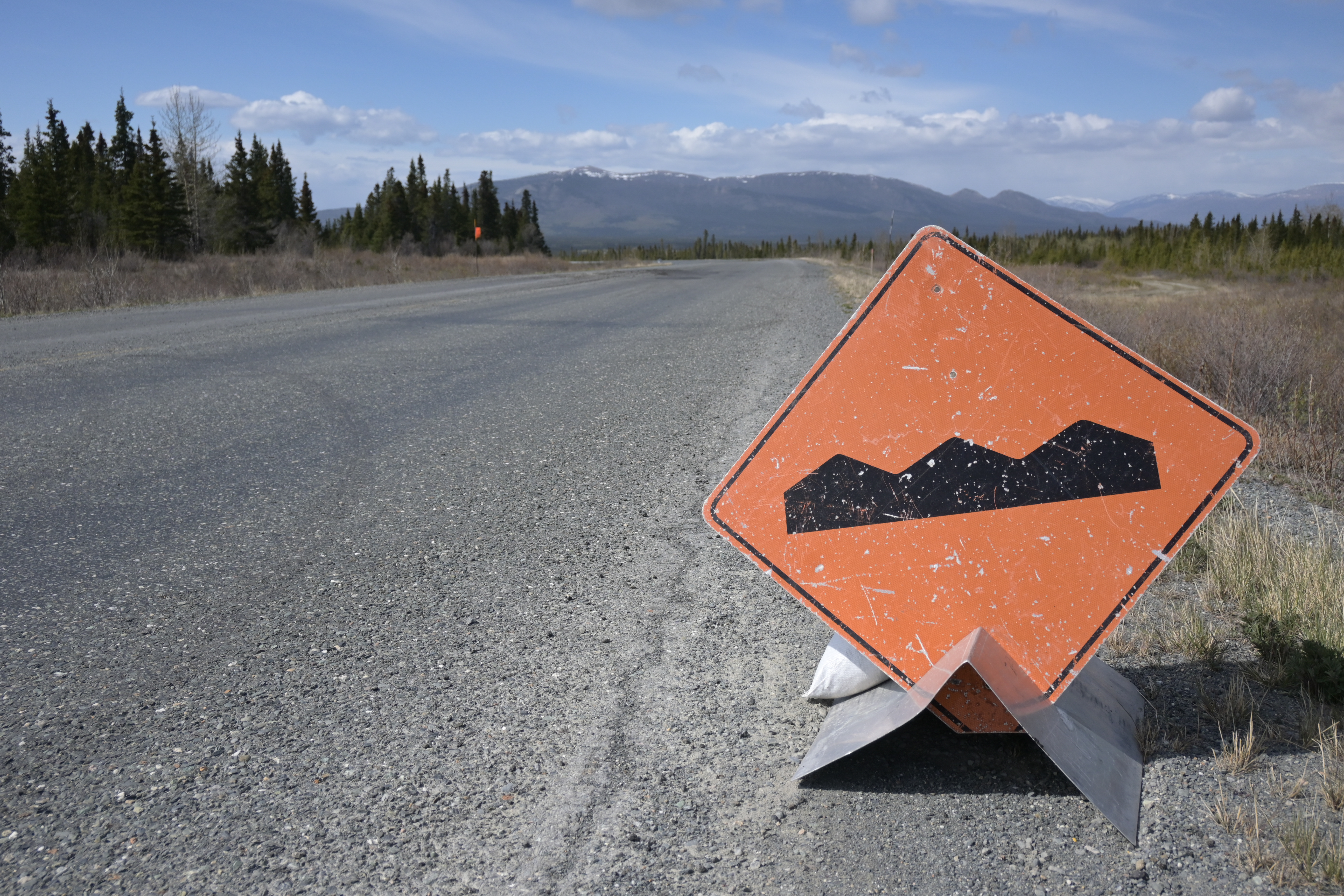
Drive with caution
The difficult road conditions can be challenging even for the most experienced drivers. Take precautions when driving to protect yourself and your vehicle.
Stay alert
Scan the road ahead for hazards and stay alert so that you have enough time to adjust your driving when you spot one.
Slow down
Driving slowly gives you more time to avoid unexpected changes in the road, like surface distortion or cracking.
Check road conditions
Before going on a trip, check road conditions on 511 Yukon.
To find road conditions:
- visit 511yukon.ca;
- download the 511 Yukon app; or
- phone 511.
Visit the driving on permafrost-affected roads website to learn more safety tips.
